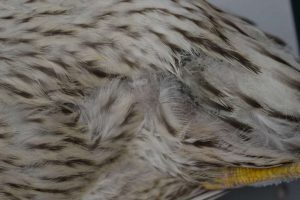Several years ago, Dan Gibson and I published a paper on Asian birds coming to North America through Alaska entitled “The Asia-to-America Influx of Avian Influenza Wild Bird Hosts Is Large.” In this paper we reversed the conclusions of a popular model of the global spread of highly pathogenic avian influenza (HPAI). We suggested that wild birds are a greater risk than domestic poultry for bringing HPAI into North America. Since then, our model proved the more accurate, presaging the arrival in North America in fall 2014 of a pure Asian strain of H5N2. Wild birds were implicated, and we inferred passage through Alaska. This strain of HPAI went on to cause the worst poultry disease outbreak in U.S. history, resulting in billions of dollars in economic losses.
At the NAOC VI bird meeting last week in Washington, D.C., avian influenza experts were wondering openly about whether this strain was already gone from wild bird populations in North America. It hadn’t been detected for over a year. Today we received news that it is not. In fact, it showed up again right here in Fairbanks earlier this month. We’ll wait to see the sequence data, but this is likely to be the strain that arrived on the continent in 2014 rather than a new introduction. The Centers for Disease Control considers this virus of low risk to humans, but to the poultry industry it’s a nightmare. We have a long way to go to understand this pathogen. Increased surveillance and better models are needed.
University of Alaska Museum Department of Ornithology

